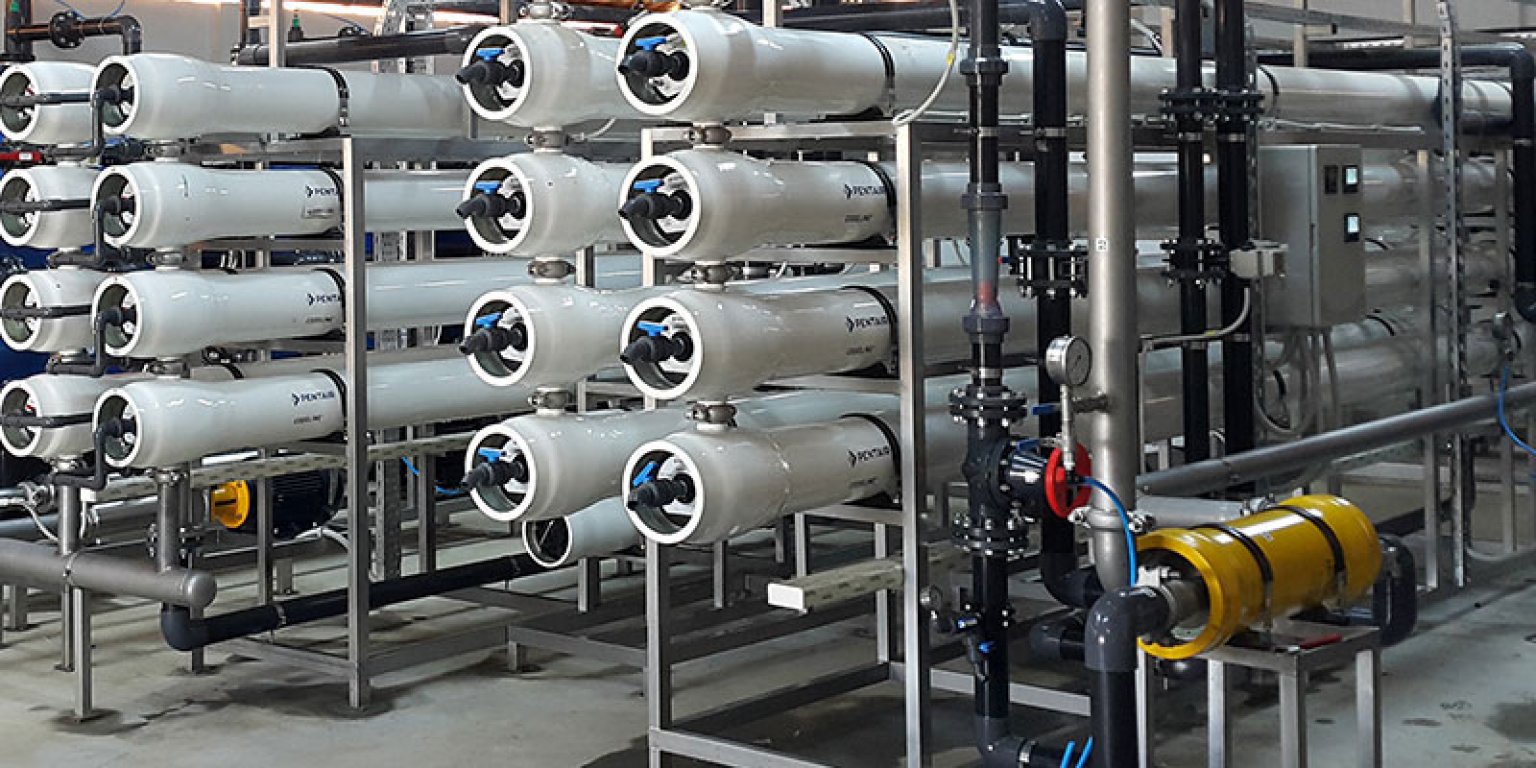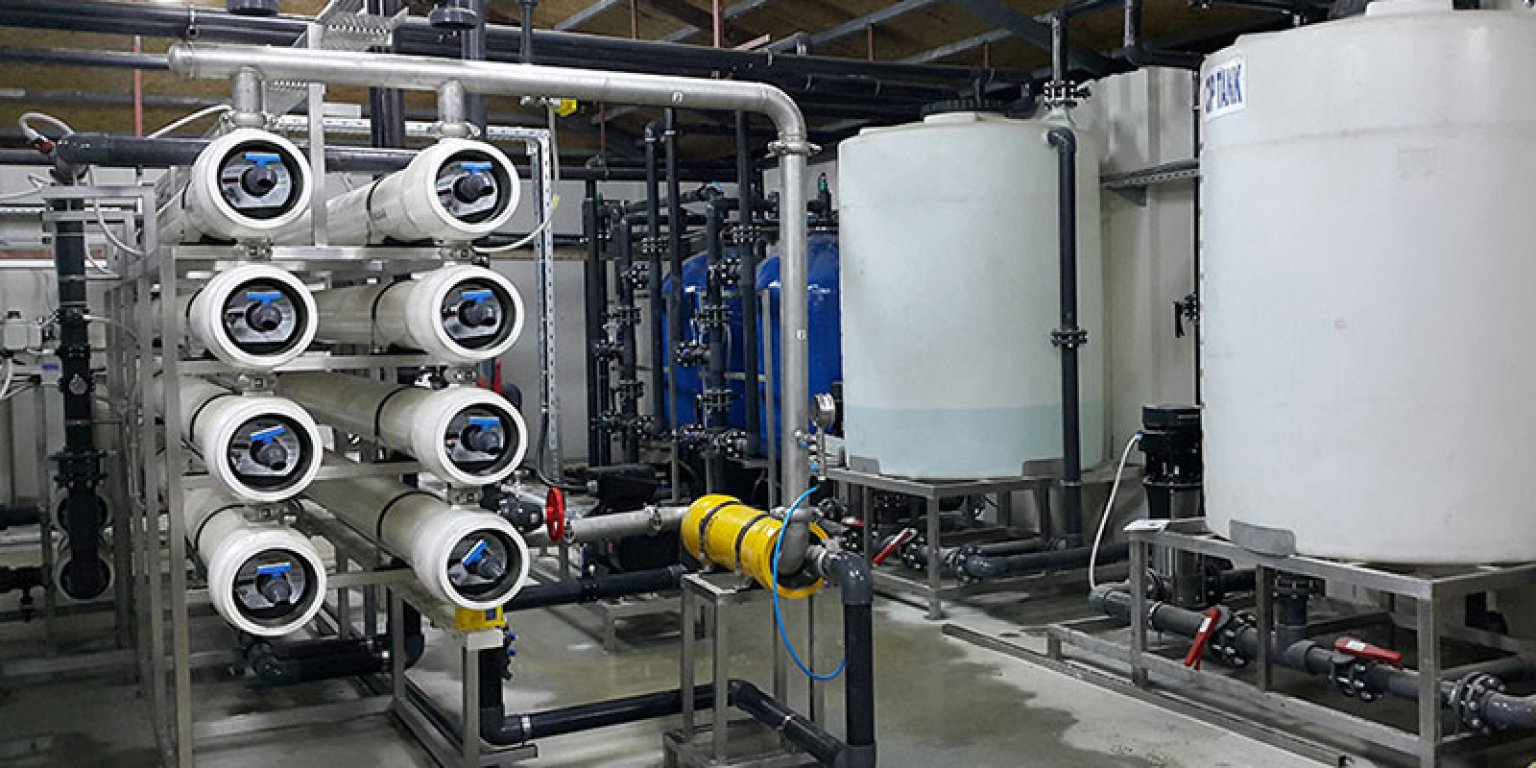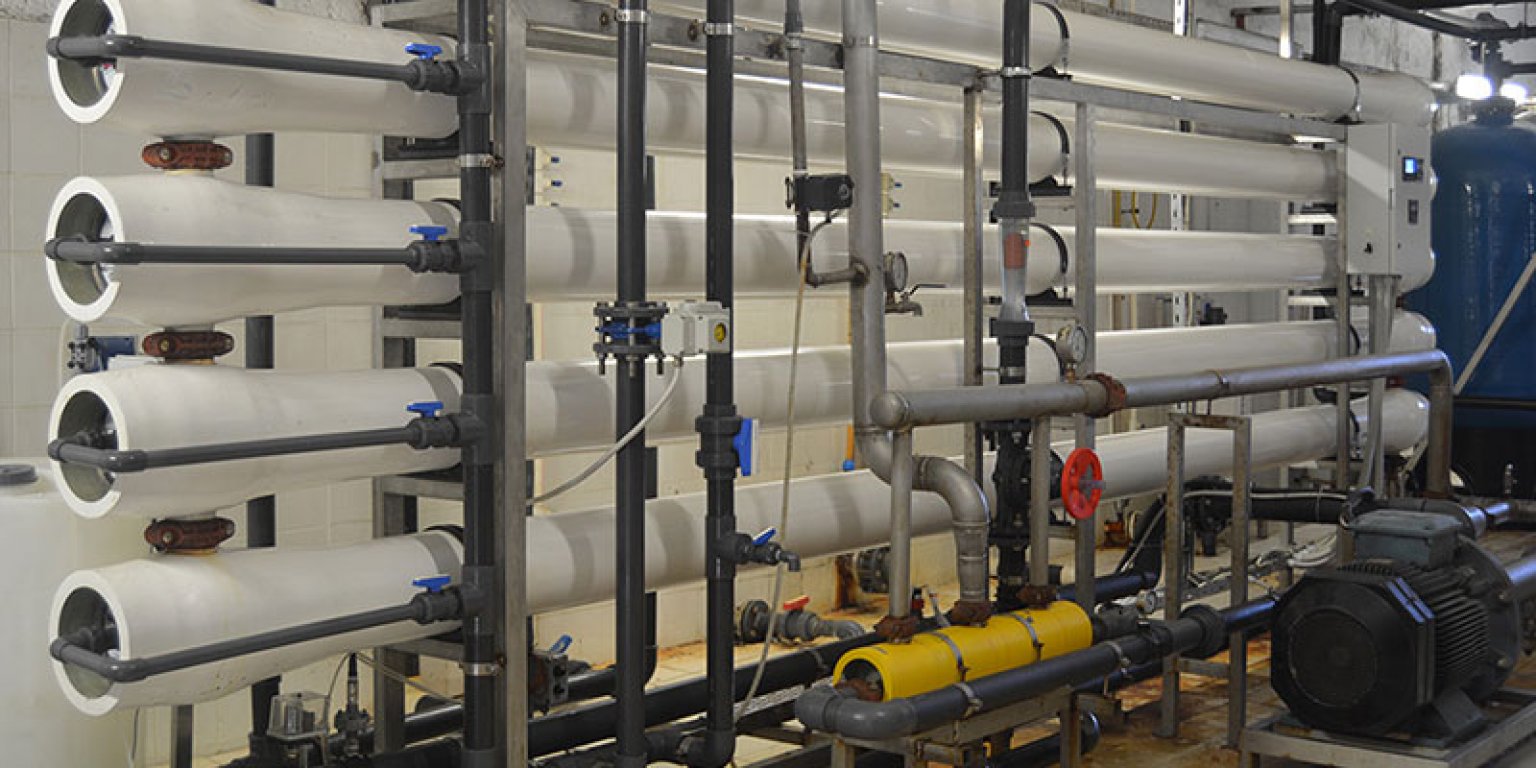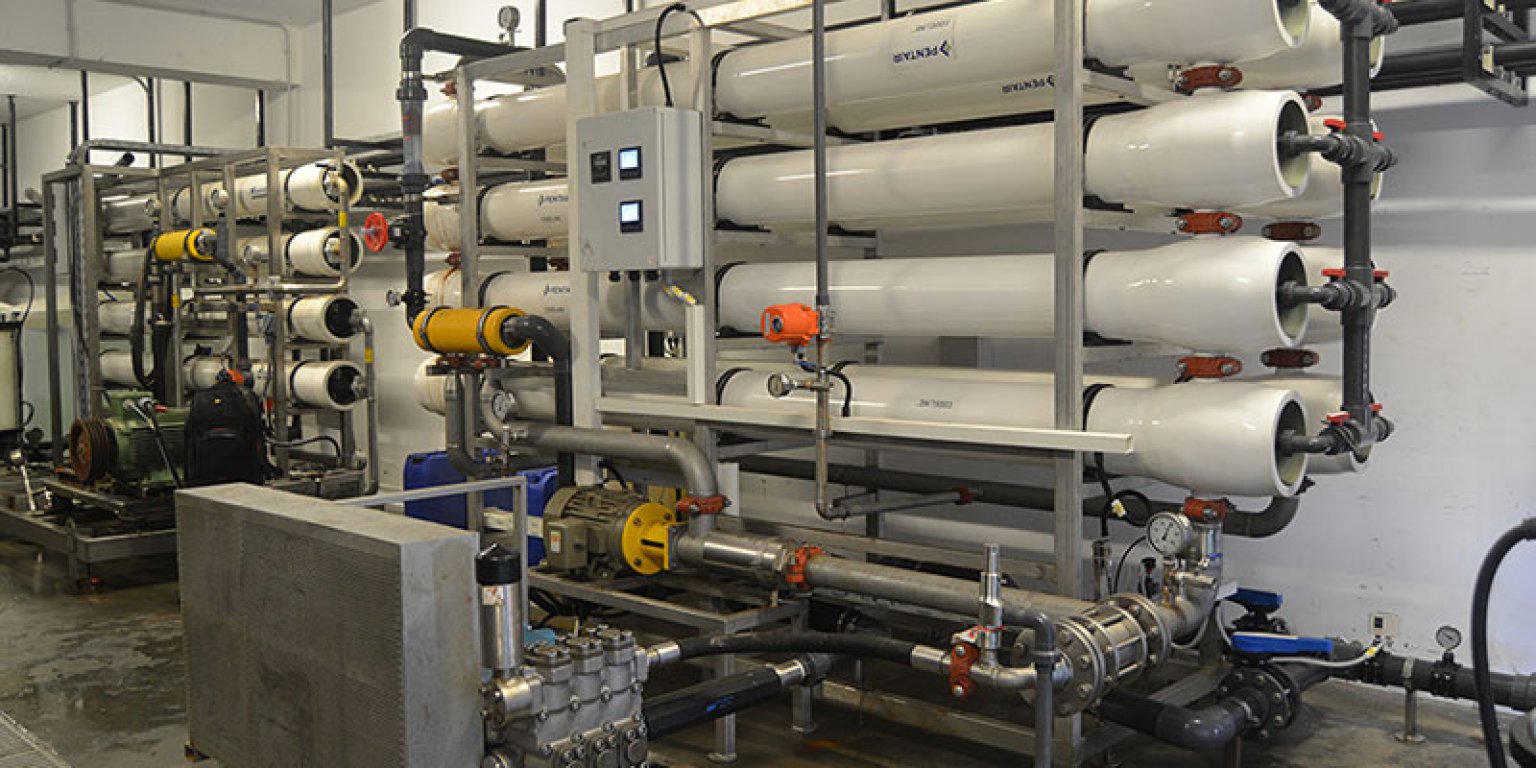
AQUALINE TETRA SERIES SEAWATER REVERSE OSMOSIS SYSTEMS




AQUALINE TETRA SERIES SEAWATER REVERSE OSMOSIS SYSTEMS
The membrane filtration process for obtaining pure water, which separates all unwanted minerals
from water, applied to waters where conventional treatment systems are insufficient (seawater,
water with high conductivity, well waters, etc.) is called reverse osmosis.
STANDARD FEATURES
Recommended Inflow Water Limits
MEMBRANE CLEANING CHEMICALS
The most common chemicals used for membrane cleaning are acid and alkaline based. Acid cleaners are designed to remove inorganic and iron deposits and performed at a pH of about 2-3. Alkaline cleaners are designed for removal of biological matter, organic foulants, and silica deposits and performed at a pH of about 10-11.
MEMBRAN CLEANING PROCEDURE
Reverse Osmosis membrane can experience a reduction in performance due to the accumulation of deposits on the membrane surface. Usually mineral scale, colloidal particles, biological matter, and insoluble organic compounds are the causes of membrane fouling. When production flow drops by at least % 15, or the differential pressure increases by % 15 over normal operating conditions, membrane cleaning should be performed. For more information, refer to the operating instructions.
- Kirkuk – Al-Quds Street Kirkuk Management
- +(964)-770-216-5522
- +(964) 750 382-7788
- sidal@sidal.co
- Erbil – Airport Road, near International Hospital, 100 Street
- +(964) 771 852-2229
- +(964) 751 852-2229
- sidal@sidal.co
Recent news
- All Post
- Air Compressors
- Blog
- Boiler
- Compressed Air Equipment
- Cooling Tower
- Laboratory
- News
- Printers
- WATER TRATEMENT
- Back
- Activated Carbon
- Chemical Dosing Systems
- Degasifier Systems
- Deionization Systems
- Disinfection Devices
- Reverse Osmosis Systems
- River Water
- Sand Filter Systems
- Ultra Voilet (UV)
- Ultrafiltration
- Softening Systems
- Back
- Air Dryers
- Filters
- Air Receivers
- Nitrogen Generator
- Oxygen Generator
- Back
- CIJ
- DOD
- LEASER MARKING MACHINES
- TIJ
- Back
- Oil Injected Rotary Screw Compressors
- Oil Free Rotary Screw Compressors
- Oil Injected Reciprocating Compressors
- Scroll Compressors
- Turbo Compressors
- Oil-Free Reciprocating Compressor


